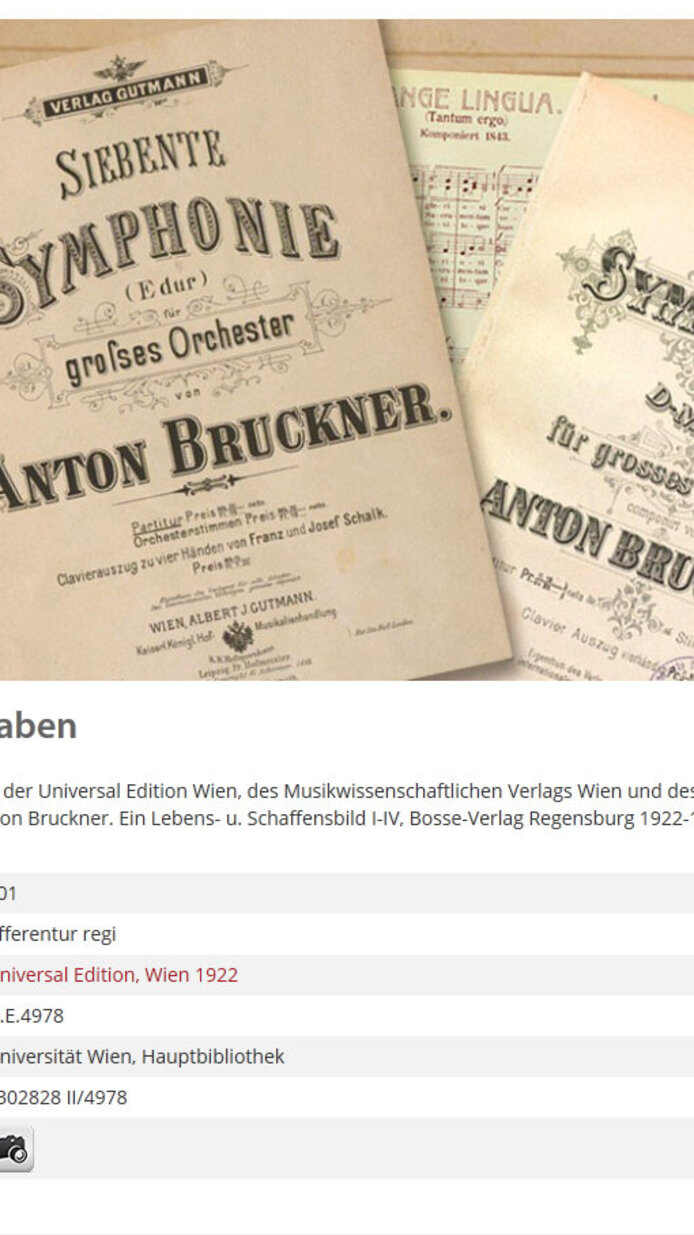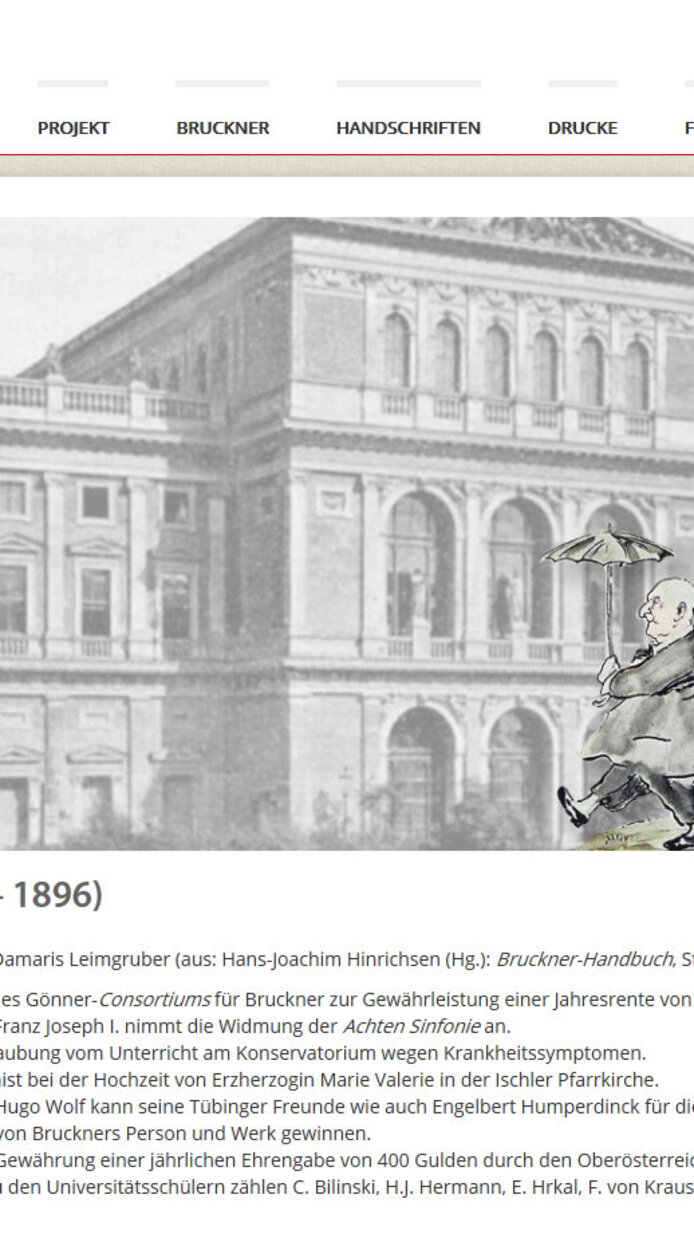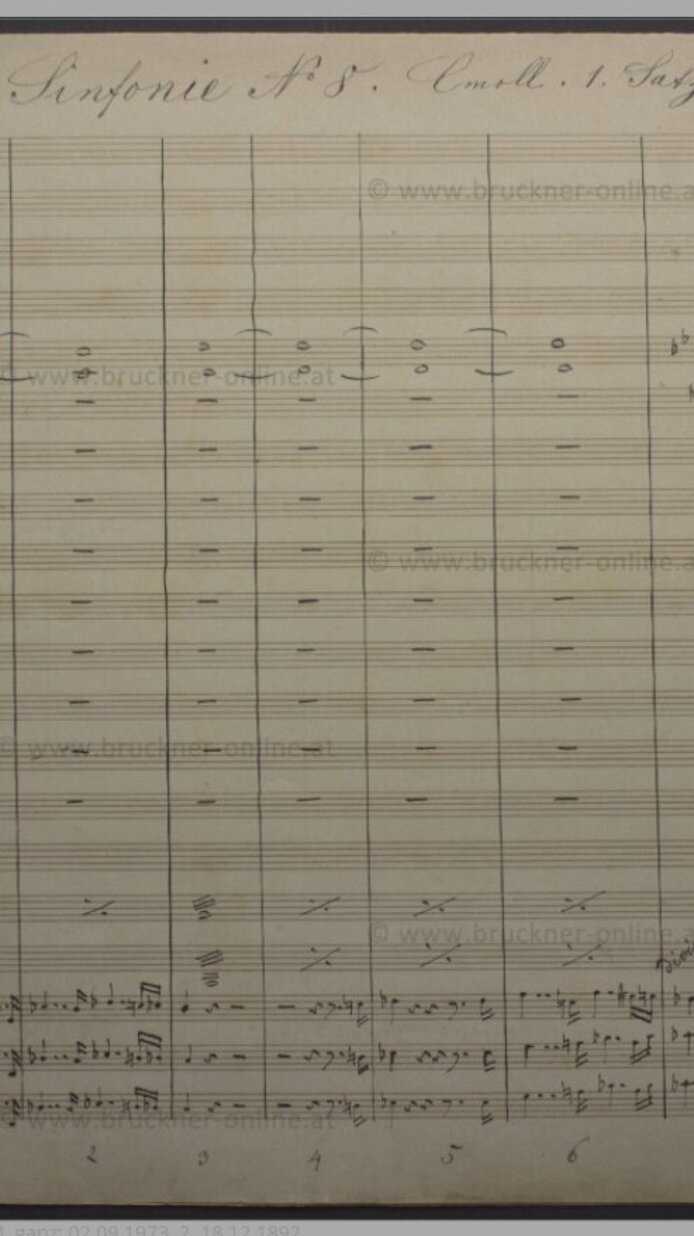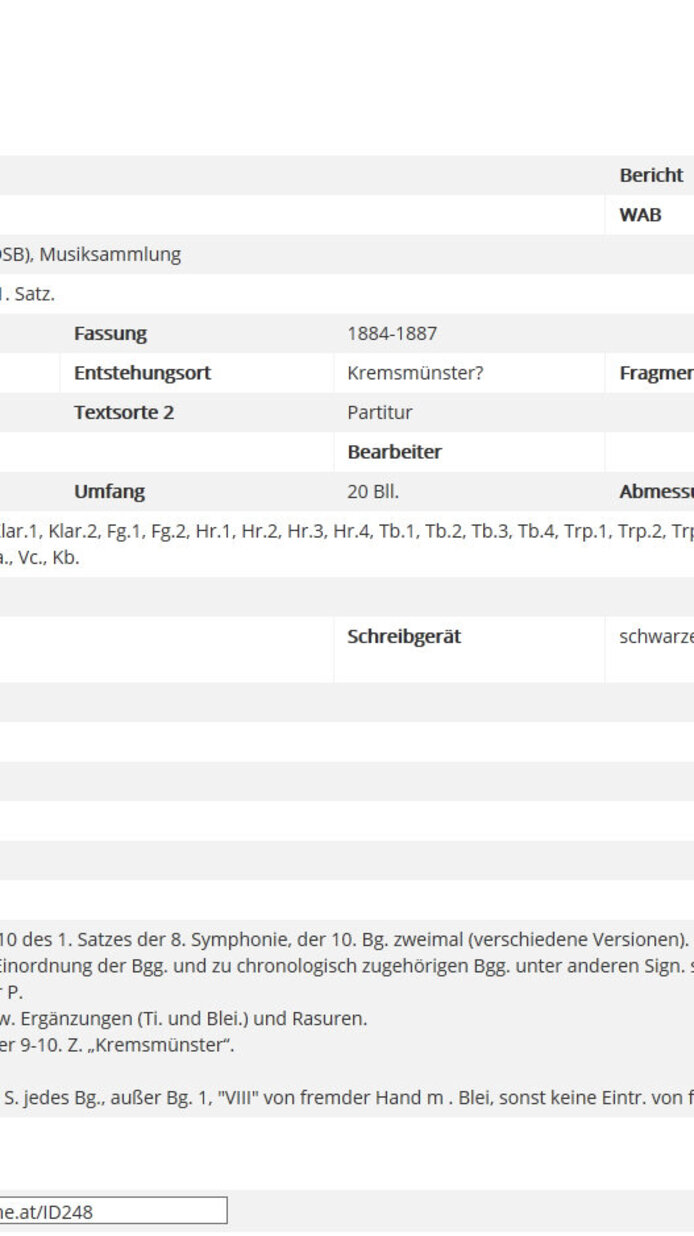A web archive documents Anton Bruckner’s oeuvre
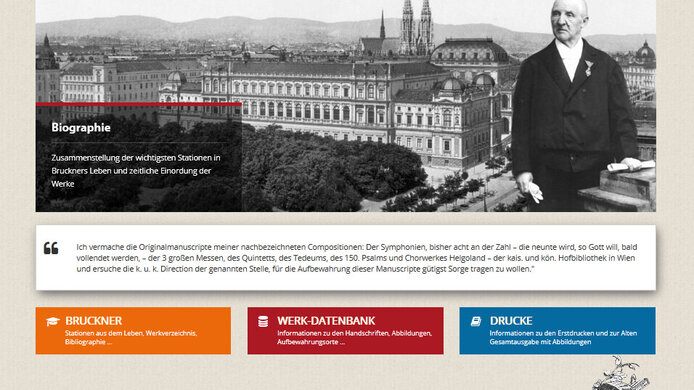
Apart from the ‘Viennese classics’, Anton Bruckner (1824-1896) is perhaps Austria’s most internationally renowned composer of serious music. His worldwide popularity is also illustrated by the number of music archives that preserve his oeuvre. Among many others, Kremsmünster Abbey keeps manuscripts by the composer which are made available to a great number of interested people. – And that leaves traces. Some of Bruckner’s handwritten scores have already suffered a great deal of damage.
Comprehensive primary source research
In a three-year project, supported by the Austrian Science Fund FWF, the Department of Musicology of the Institute of Art and Music History Research at the Austrian Academy of Sciences has digitised nearly the entire body of work of the composer and thus generated several benefits simultaneously. On the one hand, digitisation protects the precious originals against future wear, and, on the other, Bruckner fans are now able to access musical scores on the Internet and receive a great deal of additional online information free of charge. The archive contains a total of 27,000 images of nearly all original scores and relevant copies of the works of Anton Bruckner. The source material is the property of many different owners, and in some cases access is very difficult. This situation presented one of the greatest challenges for Robert Klugseder, initiator and project manager of the web archive: “Finding all relevant sources in national and international libraries, archives and private collections and settling the legal issues to authorise the Academy of Sciences to use the images online was the most time-consuming part of the project”, notes the musicologist.
Public access to a comprehensive set of data
The research effort has certainly paid off. The virtual Bruckner Archive now includes the complete oeuvre of the Upper-Austrian composer from the Romantic period. Apart from autograph manuscripts, the archive contains comprehensive descriptions of the sources, as well as 6,000 images of first editions and of the Alte Gesamtausgabe (Old Complete Edition). An additional bibliography database offers 9,422 literary references and thus provides a wide-ranging and unique map of Bruckner’s life and work. The target group for the portal are “Bruckner researchers, obviously”, notes Klugseder. But the wealth of additional information is also designed to attract the interested general public. The archive holds special significance also for projects such as complete editions by the Musikwissenschaftlicher Verlag Wien and the Verlagsgruppe Hermann. “Now, the people in charge of the individual volumes enjoy online access to the original sources”, is how Klugseder describes the benefits of digitisation. The main purpose of the web project, however, is to serve as a common platform for Bruckner research, underlines the musicologist. “Everyone is invited to share their knowledge on the website”.
Online archive opens new vistas
Now publicly accessible, the archive in its current form represents the completion of the first phase of the project. For the next step, three further modules are planned for the platform: a catalogue raisonné of Anton Bruckner’s work, a comprehensive image database and a digital music edition. The catalogue of works of 1977 has been outdated for some time. “New works have been added, erroneously attributed works have to be eliminated”, says Klugseder, who considers the website with the wealth of source material a perfect tool for drawing up a new catalogue raisonné. In the digital music edition, selected works by Bruckner are to be made available as an Edirom edition. Edirom technology makes it possible to display a synopsis of different scores, copies and prints relating to a particular work. “This is particularly attractive in the case of works that exist in different or revised versions and that were edited in mixed formats, such as the 2nd and 8th Symphonies in the Alte Gesamtausgabe”, explains Robert Klugseder.
A focus on “digital humanities” to preserve the cultural heritage
Under the catchphrase of “digital humanities”, the social sciences and humanities are currently making the transition from analogue to digital technology. Numerous research projects are devoted to preserving the cultural heritage with the help of new technologies. The Academy of Sciences also promotes this key area which provided the context for the implementation of www.bruckner-online.at. The Academy thus plays a pioneering role in the field of musicology. Another example of ground-breaking digital text modelling is the Österreichisches Musiklexikon, which has been using popular XML-technology (a meta-language) for 13 years.
Personal details Robert Klugseder is the initiator of the Bruckner Online Archive. The musician and musicologist joined the Institute for Art and Music History Research at the Austrian Academy of Sciences in 2008. Klugseder is a substantial contributor to various digitisation projects, such as the portal for medieval music manuscripts at the Austrian National Library www.cantusplanus.at
